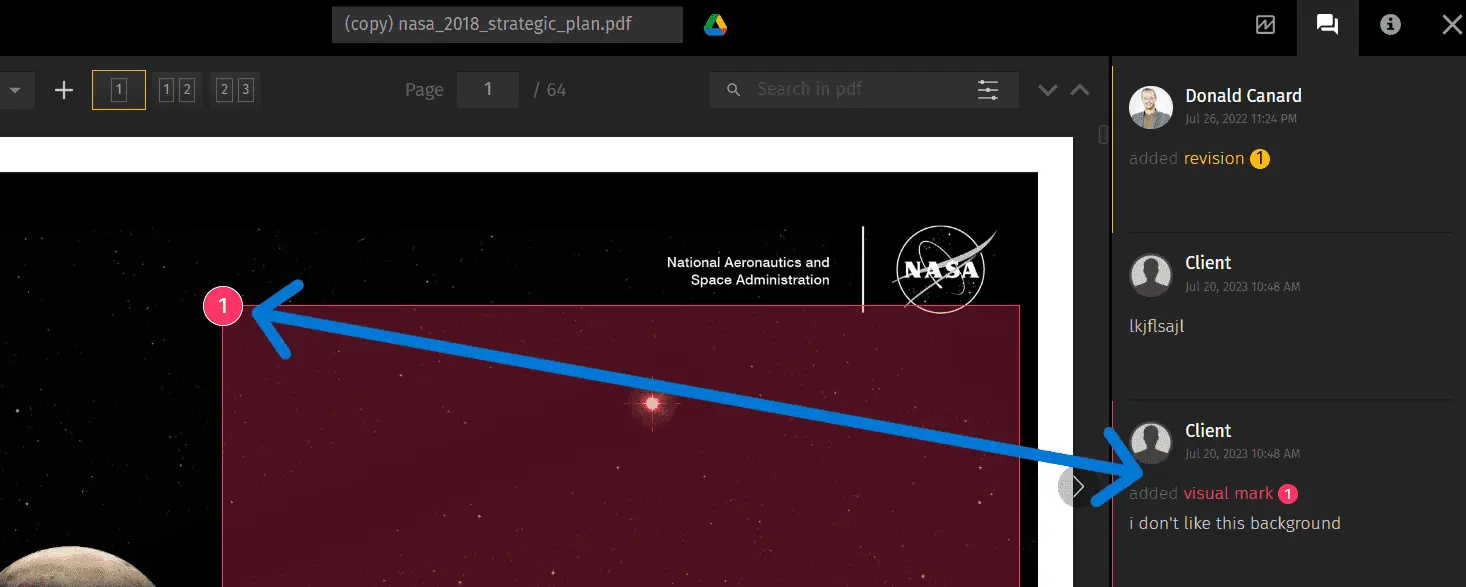In this article, you’ll learn:
A digital asset management (DAM) system operates as a centralized repository for managing, organizing, and distributing digital assets like images, videos, documents, and more. Properly utilized, a DAM system becomes an invaluable tool for maintaining brand consistency, improving collaboration, and streamlining workflows across all company’s teams. It's particularly beneficial in managing large volumes of digital content, ensuring each asset is optimally used and stored.
DAM addresses common issues such as asset duplication, accessibility, version control, and others. In today’s article, we’re talking all about issues with digital asset management and how they’re solved within DAM software. Read on!
Most Common Digital Asset Management Issues
Duplicate Files
When multiple team members work on the same document, a common issue arises: the proliferation of file versions. Over time, distinguishing the latest version becomes challenging, increasing the risk of mistakenly using or sharing outdated files. This can lead to errors like sending incorrect information to clients or using obsolete branding elements, ultimately affecting brand consistency.
Another side of this issue is simply amassing thousands of copies that clutter your digital library. From a long-term perspective, any storage can become unusable because of a high number of media files that are not managed properly.
DAM Solution
Digital Asset Management software effectively resolves file duplication issues through version control features. These features allow for tracking and managing different versions of a single file. With DAM, team members can easily identify the most recent version, reducing the risk of using outdated files. This process ensures that everyone has access to the correct, up-to-date version, can switch between versions, and even download different versions. Such flexibility coupled with version history available, allows you to quickly find the necessary file and choose the right version because the last one does not always mean the best one.

With Pics.io DAM, for instance, there’s a possibility to share all the necessary files with external stakeholders via branded portals - websites. All you need to do is share a link to such a website. With version control feature, where one can choose the current file version, all the files available via this link will be automatically updated if any changes are made. Therefore, there’s no need to update the link or send edited files every time they’re modified.
With Pics.io DAM, for instance, there’s a possibility to share all the necessary files with external stakeholders via branded portals - websites. All you need to do is share a link to such a website. With version control feature, where one can choose the current file version, all the files available via this link will be automatically updated if any changes are made. Therefore, there’s no need to update the link or send edited files every time they’re modified.
Inconsistency in Naming and Cataloguing Digital Assets
Without proper management and cataloguing, files become virtually useless, as it becomes exceedingly difficult to locate specific items when needed. Effective naming conventions and systematic cataloguing are the things that differentiate a well-organized digital library from messy digital storage.
DAM Solution
Digital asset management is vital for maintaining a functional digital library where assets are not just stored but readily available for use. Such advanced features as metadata management, custom fields, and AI-powered keyword tagging help to sort and tag all the files. For example, it’s possible to set up required custom field in a DAM platform sp that once somebody uploads new assets, they will need to fill in keywords or any other metadata of your choice. Consequently, new files will already be tagged correctly when they appear in a DAM system.
Moreover, a well-thought-out folder structure that makes sense for your company also improves asset searchability and accessibility for all team members. All these features together ensure that each asset is accurately described, easily searchable, and correctly categorized instead of turning into a disappearing file with time. This level of organization turns a chaotic digital library into a well-ordered, easily manageable repository. By enhancing searchability and accessibility, DAM systems significantly improve efficiency in handling digital assets.
Unauthorized Access and Security
In any organization, it’s important that only authorized personnel can access specific content, especially if we’re talking about sensitive data. Without adequate protection, the company risks exposure to unauthorized individuals, leading to potential breaches and compromised information.
DAM Solution
To address security risks in organizations, Digital Asset Management (DAM) systems play a key role. They incorporate advanced security measures like user role management and integration with Single Sign-On (SSO) solutions such as Google and Okta products. With such functionality, only verified personnel have access to sensitive materials like internal documents or brand assets. For example, some teammates can only view and download assets, while others can modify, upload, and delete files. DAM's structured access controls provide a secure framework for both internal and external stakeholders and contributors.
Content Collaboration
In a collaborative team setting, where diverse roles such as social media managers, designers, marketing managers, and copywriters intersect, efficient workflows are crucial for content creation. However, the more people are involved, the messier the process becomes. Somebody’s creating visuals, others are writing texts or slogans, and managers are approving all these changes. Usually, all these people send each other files and edits in direct messages or public channels, which makes the whole process time-consuming.
DAM Solution
Digital asset management enhances team content collaboration significantly. It provides an array of tools for workflow management. For instance, teams can leave comments and tag each other on assets directly. This feature makes feedback and revisions quicker and more convenient. Additionally, DAM systems offer notification setups, which can be integrated with platforms like Slack or via email, so that team members stay informed and up-to-date.

Lack of Integration
The real value of digital assets lies in their usage, not just storage. In a fast-paced environment, assets need to be actively sent and utilized in various tools and products, often multiple times a day. However, a common issue for many companies is the lack of integration with other essential software. This can significantly slow down processes, as transferring and using digital assets across different platforms becomes cumbersome and time-consuming.
DAM Solution
DAMs bring to the table multiple integrations with a variety of tools. These include design tools, CRM, project management tools, and marketing software, greatly facilitating the use and distribution of digital assets. Additionally, some DAM systems offer the flexibility to integrate with other tools via platforms like Zapier, or by utilizing DAM APIs.
Final Thoughts
To sum up, Digital Asset Management (DAM) effectively addresses several key challenges in handling digital assets. From managing duplicate files and inconsistent naming to securing authorized access and improving content collaboration, DAM's advanced functionality offers comprehensive solutions. It enhances workflow efficiency, maintains brand consistency, and secures sensitive data, making it an indispensable tool for organizations. DAM's integration capabilities further extend its utility for seamless usage of digital assets across various platforms and tools.
Did you enjoy this article? Give Pics.io a try — or book a demo with us, and we'll be happy to answer any of your questions.




